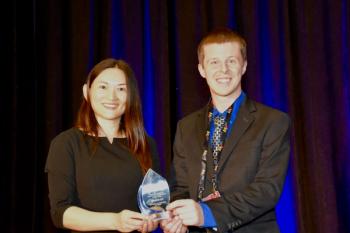
Revolutionizing Elemental and Isotopic Analysis: The Power of Single-Particle MS
Veronica Bradley's talk at SciX 2023 unveiled the transformative potential of single-particle mass spectrometry, enabling precise elemental and isotopic analysis at the particle level.
At SciX 2023 at the Golden Nugget Resort in Sparks, Nevada, there was a talk on cutting-edge analytical techniques that advance the field of elemental and isotopic analysis. This talk was held in the Central Pacific A/B/C rooms of the Golden Nugget Resort. The talk was titled "Automated Elemental and Isotopic Analysis of Particles with Single-Particle Inductively Coupled Plasma-Time of Flight-Mass Spectrometry," and it was delivered by scientist Veronica Bradley from the Oak Ridge National Laboratory.
Bradley's presentation delved into the fascinating world of single particle inductively coupled plasma–mass spectrometry (sp-ICP-MS), a sampling approach that enables the direct differentiation of individual particles (1). Isotopic characterization of particles using sp-ICP-MS has garnered significant interest across various scientific disciplines, including environmental science, nuclear research, and biological studies (1). The key innovation lies in the ability to analyze single particles without the need for bulk digestion, which has traditionally homogenized samples and obscured compositional differences between individual particles.
One of the primary limitations of conventional ICP-MS techniques is their inability to discern the binding efficiency of particles or differentiate between bound ions of interest and dissolved ions. Furthermore, single detector, quadrupole-based ICP-MS instruments suffer from inherently slow detection schemes and cannot measure multiple isotopes for a single nanoparticle efficiently. However, Bradley highlighted in the presentation that TOF-based ICP-MS instruments possess ultra-fast acquisition times, measured in microseconds, and the capability to simultaneously detect all masses (1). This groundbreaking approach enables the detection of all isotopes present in a single particle, providing a level of precision and detail previously unattainable.
To enhance sample throughput, Bradley's team conducted a comprehensive long-term stability study utilizing gold (Au) and silver (Ag) nanoparticles. They implemented an autosampler equipped with sample-mixing capabilities, a critical feature for maintaining particle suspension during extended analyses (1). This sp-ICP-TOF-MS method holds immense promise for applications where understanding the isotopic composition of a single particle is of paramount importance. One notable application is in the realm of critical material recovery, where functionalized magnetic particles can be used to extract valuable materials like platinum (Pt) (1). By analyzing the concurrent presence of critical materials and the iron (Fe) from the particles, researchers gain crucial insights into binding capabilities and material recovery processes.
This article was written with the help of artificial intelligence and has been edited to ensure accuracy and clarity. You can read more about our policy for using AI here.
Reference
(1) Bradley, V. Automated Elemental and Isotopic Analysis of Particles with Single-Particle Inductively Coupled Plasma-Time of Flight-Mass Spectrometry. Presented at SciX 2023 in Sparks, Nevada, October 10, 2023.
Newsletter
Get essential updates on the latest spectroscopy technologies, regulatory standards, and best practices—subscribe today to Spectroscopy.




